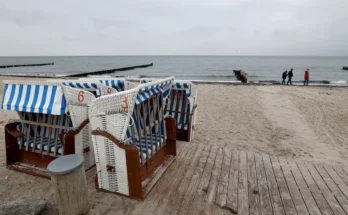Emmanuel Carrère explains in the first of the reports he wrote on the trial for the terrorist attack of November 13, 2015 in Paris that one of the issues that interested him in that trial, which took place in the Palace of Justice of the French capital between 2021 and 2022, was the moment in which pathology begins within a religion. “When it comes to God, where does the madness begin?” he asks. And this problem is present every time violence reaches unbearable limits, and it is incomprehensible that there are people who are committed to turning life into hell. And not always due to religious convictions, but also due to ideological imperatives.
Ten years have passed since that atrocity which occurred in Paris and shocked the whole world. The events are recalled these days and the narration feels as if it comes from afar while you pass the beads of a rosary and your gaze is absorbed in the void, still perplexed and immersed in thought. shock. Then imagine those who were nearby, directly affected by the horror. It all started at 9.20pm. Friday 13th and ended on Saturday at 1.40am. It was an orchestrated action involving nine armed men and explosive belts. They shot obsessively and meticulously, killing 130 people and wounding 350. Near the Stade de France, one fell; in the Bataclan room, 90 and 39 in various terraces and restaurants in the 10th and 11th arrondissements. “Before entering Via Charonne, the headquarters of the trio who were about to machine-gun the terraces stopped at the traffic lights, at the height of passers-by,” says Carrère. “One of the terrorists rolled down his window and said, ‘We are the Islamic State, who have come to cut your throat.’ Then, as he drove away, he added, ‘It’s not a joke.’
It wasn’t. During the trial, one of the psychiatrists questioned explained that “evil is rarely perpetrated in the name of evil, but almost always in the name of good, and what great psychic protection, what narcissistic consolation the adherence to a system of beliefs without a solution of continuity such as political-religious fanaticism offers to a weak personality.” Carrère collects in another of the pieces that this newspaper has published, and which has been assembled V13. Judicial news (Anagrama), the testimony of one of the radicalized young people involved in some way in the massacre. He explained it jihadin Arabic, “it simply means the effort that each person makes every day to be better”.
So they killed mercilessly to become better, and then committed suicide to enter heaven as martyrs. This is what the madness that Carrère wanted to explore consists of. There was a tenth terrorist, Salah Abdeslam, who separated from the group and ultimately gave up on activating his explosive belt. What happened to you to back out? Fear? Compassion for the victims? He entered the first day of the trial at the Palace of Justice with a hint of cheek and boasted of being a fighter for the Islamic State. Unable to take the step, over time he realized that he had become a traitor. Carrère faces him and observes that he does not know who he is and that, since the day of the attack, “he has oscillated between these two representations of himself: the heroic fighter who has had a bad time and the poor lost devil of Molenbeek who at a given moment has followed the wrong path”. Ten years later, that enigma still hurts: what material did the other nine’s belief that they were capable of making the leap towards madness have?



